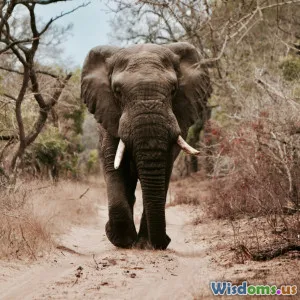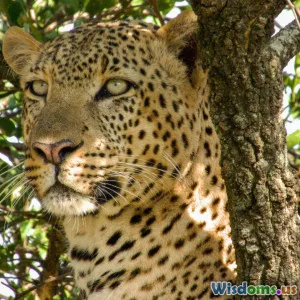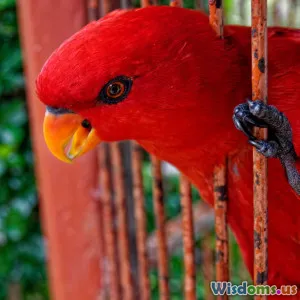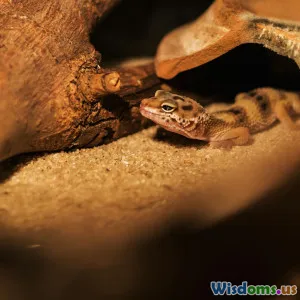
Lions or Elephants Who Faces Greater Threats in Africa
10 min read A detailed comparison of the threats lions and elephants face in Africa and what it means for their survival. (0 Reviews)
Lions or Elephants: Who Faces Greater Threats in Africa?
Africa’s vast wilderness is home to two of its most iconic species: the regal lion and the gigantic elephant. Both captivate our imagination, symbolizing strength and wild freedom, yet both stand on precarious ground as their survival faces mounting challenges. But which animal faces greater threats? Understanding the nuances behind these threats is critical not just for conservationists but for anyone who values biodiversity and the intricate ecological balance these giants support.
Introduction: Setting the Stage for Survival
When we picture Africa’s animal kingdom, lions roaring under the sunset and elephants migrating across dusty plains often come to mind. These majestic creatures have existed for millennia, yet today, they symbolize the fragility of the wild. Their numbers have declined dramatically due to human activity, bringing forth urgent questions about their futures.
This article delves deep into the comparative threats faced by lions and elephants across Africa, dissecting causes like poaching, habitat destruction, and conflict with humans. It examines scientific data, population trends, and conservation efforts, shedding light on who is in more peril and why.
Lions in Africa: The Apex Predator Under Siege
Status and Population Trends
Lions (Panthera leo) once roamed most of Africa and parts of Asia, but their current distribution is greatly reduced, primarily confined to sub-Saharan Africa. According to the International Union for Conservation of Nature (IUCN), lion populations have plummeted by approximately 43% over the past two decades, with fewer than 20,000 left in the wild.
Some countries like Tanzania and Botswana still have healthy subpopulations, but many others face fragmented habitats and dwindling numbers.
Primary Threats to Lions
Habitat Loss and Fragmentation
Rapid human population growth and land conversion for agriculture and settlements grind lion habitats into smaller, isolated pockets. This fragmentation disrupts their traditional roaming territories, causing genetic bottlenecks and reducing prey availability.
For example, the Serengeti ecosystem is a stronghold, but encroachment nearby threatens its integrity.
Human-Wildlife Conflict
Lions prey on livestock, leading to retaliatory killings by farmers and herders. Community tolerance varies but many resort to poison or firearms. A 2016 study across Kenya’s Maasai Mara reported over 160 lions killed in retaliation over five years.
Poaching and Trophy Hunting
Unlike elephants, lions aren’t commonly targeted for traditional poaching; however, illegal killing and controversial trophy hunting impact populations. While trophy hunting is regulated, poor enforcement can lead to unsustainable off-takes.
Decline in Prey Availability
Overhunting of native herbivores by humans reduces food sources for lions, leading to starvation or increased livestock predation.
Conservation Challenges and Success Stories
Successful projects like the Lion Guardians initiative empower local communities to protect lions, reducing conflict. However, lions need large connected habitats, which is increasingly difficult due to changing land use.
Elephants in Africa: Giants on the Brink
Status and Population Trends
African elephants comprise two species: the savanna elephant (Loxodonta africana) and the smaller forest elephant (Loxodonta cyclotis). The savanna elephants have been better studied, with a current estimate of approximately 400,000 individuals. Despite their seemingly large population, the IUCN classifies the forest elephant as critically endangered, having suffered an 86% decline in 31 years.
Similarly, savanna elephants' numbers have dropped by nearly 30% over the past decade, largely due to poaching.
Primary Threats to Elephants
Poaching for Ivory
Ivory poaching remains the single greatest threat. Despite international bans since 1989, poachers target elephants for their tusks, feeding a highly lucrative black market primarily in Asia.
Between 2010 and 2012, an estimated 100,000 elephants were killed, equivalent to around 8% of the population annually. Countries like Mozambique and Tanzania have suffered severe losses.
Habitat Loss and Human-Elephant Conflict
Elephants require vast territories for foraging. Expansion of agriculture, mining, and infrastructure reduces and fragments their habitat. Their migratory routes are disrupted, leading to collisions with human settlements.
Human-elephant conflicts often emerge when elephants raid crops, leading to retaliatory killings or displacement.
Climate Change Impact
Changes in rainfall patterns affect water availability and vegetation, critical to elephants’ survival. Droughts force them into risky areas near humans.
Conservation Efforts and Legacy
Anti-poaching units using drones, GPS tracking, and community-based conservation have made strides in well-funded parks like Kruger National Park. Legal ivory trade debates (e.g., one-off sales by Botswana and Namibia) divide conservationists on the best approach.
Community conservancies in Kenya and Botswana integrate tribal incentives linked to elephant tourism, aligning local prosperity with survival.
Comparative Analysis: Which Animal Faces Greater Threats?
Scale and Intensity of Poaching
Elephants are more intensely targeted for commercial poaching due to ivory’s high demand. While lions do face illegal killings, their decline is less attributable to poaching and more to habitat loss and conflict.
Habitat Sensitivity
Lions require large contiguous territories and diverse prey, making them highly sensitive to fragmentation. Elephants, though needing vast ranges, demonstrate some adaptability by altering migratory routes but face severe risks when routes are blocked.
Human-Wildlife Conflict
Both species engage in conflict with humans, but lions’ predation on livestock often prompts lethal retaliation, sometimes disproportionately affecting small subpopulations. Elephants cause crop damage but retaliatory killings are sometimes less frequent due to anti-poaching patrols and community engagement.
Population Viability and Reproductive Rates
Elephants have a slower reproductive cycle (a 22-month gestation and calves every 4-6 years), making population recovery slower post-decline. Lions reproduce more rapidly but face risks due to territory loss and gene pool fragmentation.
Legal Protections and Conservation Funding
Elephants arguably receive more global attention and funding given their charismatic appeal and ivory crisis prominence. Lions benefit from wildlife tourism but have less cohesive international protection status.
Inspiring Action: What Can Be Done?
Conservation strategies must be tailored:
- For lions: strengthen habitat corridors, promote coexistence programs with pastoralist communities, and enforce hunting regulations.
- For elephants: enhance anti-poaching patrols using innovative technology, close international ivory markets, and safeguard migratory corridors.
Collaborative conservation efforts incorporating indigenous knowledge, governmental policies, and international support are critical.
Conclusion: Shared Fate, Distinct Challenges
Both lions and elephants face existential threats in Africa, but the nature and scale differ. Elephants grapple primarily with devastating poaching and habitat disruption, while lions struggle with habitat fragmentation, human conflict, and indirect threats.
Conservation is not a zero-sum game—protecting one often helps the other by preserving ecosystem integrity. Recognizing their unique challenges allows for targeted interventions, ensuring these majestic species continue inspiring awe for generations.
Only through sustained effort, scientific insight, and global commitment can we tip the balance back in favor of lions and elephants alike.
Remembering the words of conservationist Dr. Cynthia Moss:' “To save the elephant is to save a continent’s heritage. To save the lion is to save a symbol of wild Africa’s strength. Losing either would be a loss without equal.”
The future of these magnificent creatures depends on our actions today.
Rate the Post
User Reviews
Popular Posts



















